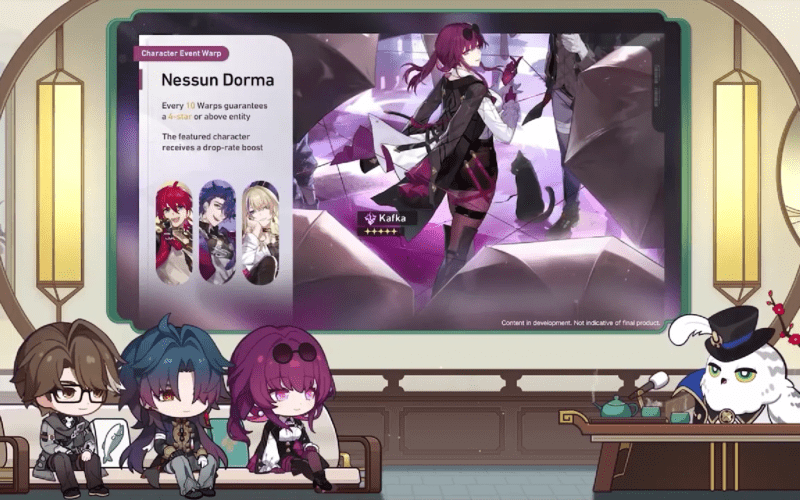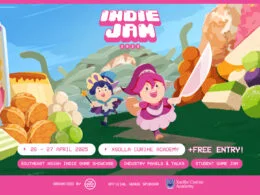Journey through the great beyond in Hello Goodboy with Iko, a newly-arrived soul, and Coco, his cheerful guide dog. This nonlinear adventure game by Rolling Glory Jam explores the themes of death, grief and redemption through its compelling worlds and characters set amidst a rich background of Indonesian culture. Choices matter even in the afterlife as Iko and Coco make decisions that affect them and the world around them.

Gameplay
In the hallway of Kuruto, the pair must go through four different doors – portals to various worlds where they meet and befriend the other inhabitants of the afterlife. It’s a mix of exploration and puzzle-solving as they help these fellow souls with their tasks, and mend what they find broken. Each good deed rewards them with Joy Pieces that Iko collects.
These interactive aspects of the game use simple mechanics, which keep the focus on the narrative. Some involve pressing keys with the correct timing or rhythm, and others involve rearranging pieces to form a complete picture – all of which have no added pressure or high level of difficulty.
Decision-making is scattered throughout the story in dialogues and interactions. Iko always has the choice whether to do an action or not, although in certain instances, Coco tends to push Iko in a direction that allows him to open up more to the characters around him, cementing his role as the guide dog.

Major decisions are needed in the beginning and end of each chapter which affect the pair’s journey, as each choice affects the time in the magic hourglass and how long they can stay in Kuruto. Players have the illusion of choice as it will always lead to “the end”, but the experience and relationships Iko and Coco will have with the other characters vary per route.
There is a sense of finality after each major decision because, as Coco states, one can never go back to redo those choices. However, this core aspect of the game feels weakened by the short length of each playthrough which limits how many worlds one can travel through. A player can only visit two worlds out of four in one route, and it’s almost too short. The push for replayability sacrifices the level of immersion already established by the game and almost rushes the player to the end.

Story, Visuals & Music
Each door in Kuruto leads Iko and Coco to characters from various walks of life from a lonely child to an overworked lumberjack, and more. They learn their stories, motives and hopes for the future, which is a refreshing way of seeing the afterlife that is usually depicted as a final resting place versus a new land for more adventures. Glimpses of Iko’s past life, which he has no recollection of, also resurface as one progresses through the worlds.
Though the game allows the player to skip parts of the story in order to get to the decision-making point, the same could be considered for the end game chapter. The unskippable scene may get repetitive for those who would want to see all four routes – which is worth going through to get a deeper dive into each character as well as earn in-game achievements.

Painterly backgrounds evoke a sense of nostalgia in each of the worlds which frames the story of the characters well and complement the illustrative, colored-pencil style of the characters and cutscenes. The attention to detail especially with the food, a key element in the game, is a treat for the eyes. The visuals and the music call for the player to slow down, admire the scenery and enjoy the journey each step of the way.
Overall, Hello Goodboy is a pleasant experience that handles sadness and grief delicately and respectfully, with its stories about second chances, change, and the goodness that prevails.

This review was contributed by HeraSays, streamer, art director, and avid indie game fan with no sense of direction. Follow her on Twitch, Youtube, and Twitter.












